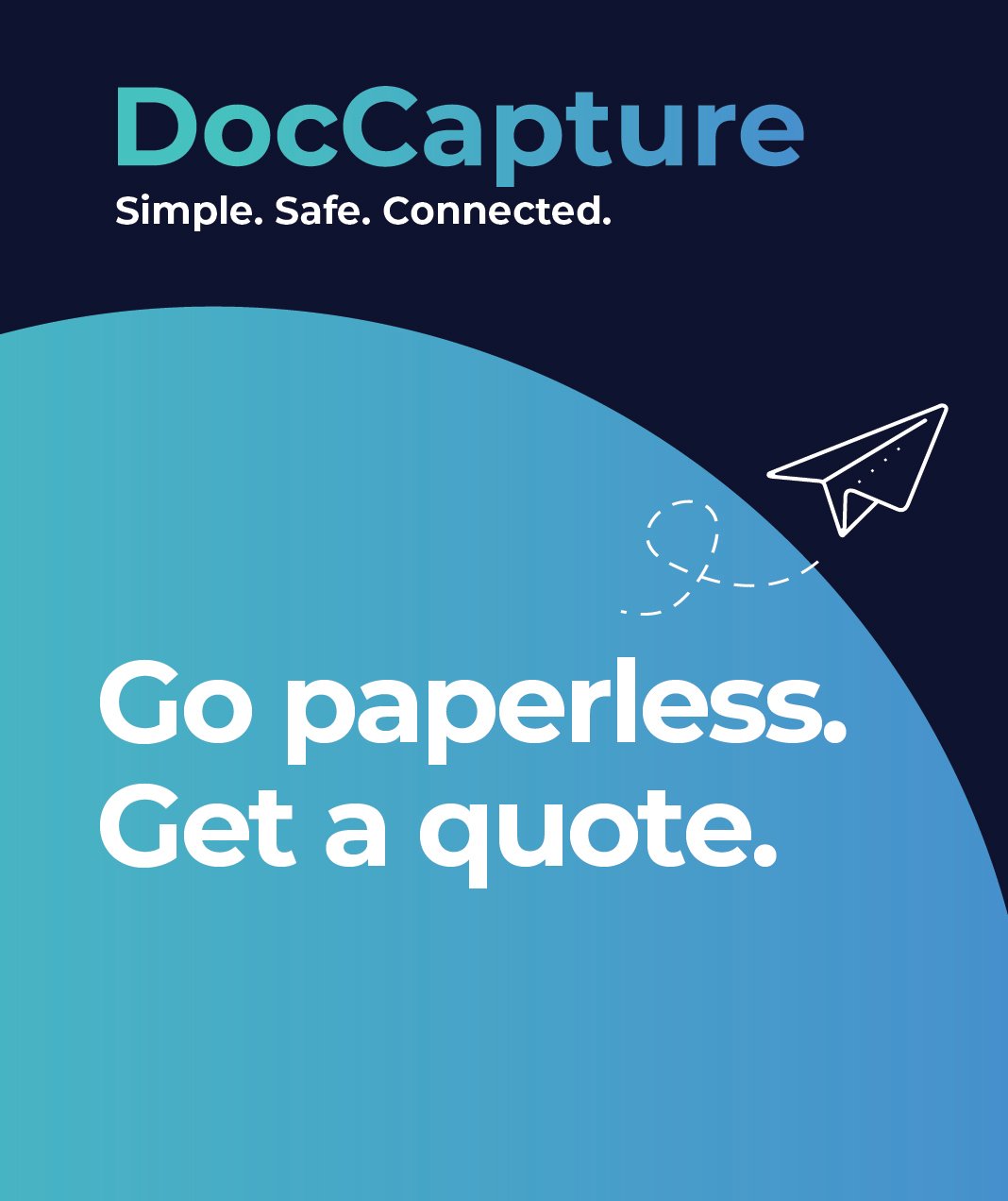Improving Audit Readiness in AP with Digital Document Management
Table of contents
In today’s increasingly regulated business environment, audit readiness is no longer a nice-to-have—it’s a necessity. Finance leaders face heightened scrutiny from regulators, auditors, and stakeholders who expect complete transparency, traceability, and timeliness in financial reporting. Nowhere is this more critical than in accounts payable (AP), where documentation gaps or delays can lead to serious compliance issues and financial penalties.
The rise of remote work, expanding invoice volumes, and tighter audit timelines have only magnified the pressure. Manual, paper-based AP processes are not just outdated—they’re liability risks. From misplaced invoices to time-consuming document retrieval, traditional methods make it harder to prove compliance when it matters most.
This article explores how digitizing AP records through secure document scanning significantly enhances audit preparedness. We’ll examine the pitfalls of paper-based workflows and explain how going digital delivers the control, visibility, and accuracy that today’s audits demand.
The AP Department’s Role in Audit Preparation
In any financial audit, accounts payable plays a pivotal role. From vendor invoices and payment authorizations to purchase orders and remittance details, AP records serve as a primary source of financial data that auditors rely on to verify accuracy and compliance. If these documents are incomplete, inaccessible, or disorganized, audit timelines can quickly spiral—and so can compliance risks.
Timely, accurate, and easily retrievable AP documentation is essential to support internal controls and satisfy audit requirements. Auditors often request:
-
Detailed transaction histories
-
Proof of approval workflows
-
Documentation of payment timelines
-
Records of policy compliance
When these records are centralized and consistent, the AP department becomes a strength rather than a stumbling block during audits.
To learn more about the foundational role AP plays in audits and digital transformation, check out:
Challenges of Paper-Based AP Systems
Despite the growing demand for digital transformation, many AP departments still rely on manual, paper-based processes. These outdated systems create significant roadblocks when it comes to improving audit readiness in accounts payable. Common issues include:
Document Retrieval Delays
Audits are time-sensitive. When AP records are stored in filing cabinets or scattered across multiple locations, locating the right document at the right time becomes a major challenge. Auditors often need quick access to payment histories, invoice copies, and approval trails—none of which are easily retrieved from paper files.
Missing or Incomplete Records
Paper documents are prone to loss, damage, and misfiling. One missing invoice can derail an entire audit trail, raising red flags for compliance and increasing the risk of audit findings. Worse, it often results in time-consuming efforts to recreate or validate missing information.
Lack of Transparency
Manual processes limit visibility into workflows and approval steps. Without timestamped audit trails or system-generated logs, proving compliance with internal controls becomes guesswork. This lack of transparency makes it difficult to meet the stringent standards of audits governed by regulations like SOX or GAAP.
Increased Audit Risk and Stress
The cumulative effect of these challenges leads to higher audit costs, longer durations, and increased stress on finance teams. Manual preparation becomes a fire drill, pulling AP managers away from strategic work to scramble for documentation.
For a deeper dive into why legacy systems fall short, see:
How Scanning AP Records Improves Audit Readiness
Shifting from paper to digital records isn’t just a modernization effort—it’s a strategic move that directly supports improving audit readiness in accounts payable. Document scanning turns disorganized, hard-to-track files into centralized, secure, and searchable digital assets. Here’s how that transformation pays off:
Centralized, Searchable Document Repository
Digital AP systems store scanned invoices and related documents in a centralized location, accessible from anywhere. Powerful search capabilities make it easy to retrieve specific records instantly, based on vendor name, date, invoice number, or keyword. This drastically cuts down response times during audits.
Improved Accuracy and Version Control
Scanned documents, when integrated into a digital workflow, ensure that the most accurate and up-to-date versions are available. No more worrying about duplicate files, outdated copies, or handwritten edits. Version control and data validation reduce errors and boost confidence in the records presented to auditors.
Built-in Audit Trails
Every scanned record can be accompanied by automated metadata, including timestamps, user actions, and approval workflows. These audit trails provide clear documentation of who approved what, when, and why—streamlining compliance with internal controls and external regulations.
Faster Collaboration with Auditors
With digital access, finance teams can share documents securely with auditors in just a few clicks—no printing, scanning, or overnight shipping required. This level of speed and convenience helps keep audit timelines on track and builds credibility with external reviewers.
By digitizing AP workflows, companies shift from reactive scrambling to proactive audit preparation—reducing surprises and building a foundation of trust with stakeholders.
Real Compliance Benefits of Going Digital
While the operational efficiencies of digitizing AP are significant, the compliance advantages are even more compelling—especially for enterprises aiming to reduce audit risk and meet evolving regulatory demands. Here's how document scanning directly supports improving audit readiness in accounts payable:
Easier Adherence to Financial Regulations
Digital AP systems make it simpler to comply with financial regulations such as SOX (Sarbanes-Oxley Act), GAAP, and other industry-specific standards. Document scanning ensures records are complete, timestamped, and traceable, which is exactly what auditors look for when assessing internal controls and risk management practices.
Instant Document Retrieval for Auditors
Auditors often operate under tight deadlines and expect immediate access to supporting documentation. A digital system allows AP teams to retrieve and share requested documents within minutes. This level of responsiveness reflects well on the organization’s internal processes and reduces the duration and intensity of audit engagements.
Reduced Compliance Risk and Penalty Exposure
Paper-based systems increase the likelihood of lost or incomplete records, which can trigger compliance violations and fines. Digitizing AP records closes these gaps by ensuring documentation is complete, consistent, and securely stored. It’s a proactive safeguard against both internal and external audit findings.
Strengthened Internal Controls
By automating approval workflows and document management, companies gain better oversight into how transactions are authorized and processed. This automation helps prevent fraud, enforces segregation of duties, and provides a clear audit trail—key components of a strong compliance posture.
Addressing Common Concerns
Despite the clear benefits, some finance leaders and AP teams hesitate to transition from paper to digital due to perceived challenges. But the barriers to document scanning and automation are more manageable than many think—and the long-term ROI far outweighs the initial investment.
Overcoming Staff Resistance to Automation
Change can be uncomfortable, especially for teams used to manual workflows. However, modern document scanning solutions are designed for user-friendliness and minimal disruption. Training and onboarding are often quick, and once staff see how much time and frustration they save, adoption typically improves. Involving your AP team early in the process and highlighting how it reduces their audit-season stress can drive buy-in.
Explore more in Why Your Accounts Payable Department Should Be Paperless.
Ensuring Security and Data Compliance
Some companies worry that digitizing AP documents could introduce data security risks. In reality, digital systems often provide stronger safeguards than paper-based ones. Features like role-based access controls, encryption, automated backups, and compliance with frameworks like SOC 2 and GDPR ensure that sensitive financial data stays protected.
Read about secure digitization in Document Scanning Services for Accounts Payable.
Measuring ROI from Reduced Audit Costs
One of the most overlooked benefits of document scanning is how much it cuts down audit-related costs. From reduced labor hours spent retrieving and organizing files to fewer auditor requests for clarifications, digitized systems accelerate the process and minimize billable hours from external auditors. Many companies see measurable ROI within the first year through time savings and reduced audit risk alone.
For a broader view, visit Streamlining AP: The Digital Transformation of Accounts Payable.
Why DocCapture Is the Ideal Partner
Choosing the right partner for AP digitization is just as important as the decision to go digital itself. That’s where DocCapture excels. With deep experience in secure, scalable document scanning, DocCapture helps finance teams make the transition from paper to digital with minimal disruption and maximum impact on audit readiness.
Expertise in AP Document Scanning
DocCapture specializes in high-volume accounts payable document scanning, ensuring that every invoice, receipt, and approval record is captured accurately and efficiently. Their process includes rigorous quality checks and indexing protocols to make documents instantly retrievable and audit-ready.
Explore their full capabilities here:
👉 Accounts Payable Document Scanning
Secure, Compliant, and Scalable Solutions
Security is built into every stage of DocCapture’s process. With compliance-ready solutions that align with standards like SOC 2 and GDPR, your AP data remains protected while remaining accessible to authorized users. Whether your enterprise processes thousands or millions of invoices annually, DocCapture scales to meet your needs—without sacrificing performance or accuracy.
Seamless Integration and Support
DocCapture’s solutions are designed to integrate easily with your existing AP systems and workflows. Their team offers full support during setup and onboarding, helping your staff feel confident and capable from day one. Plus, ongoing customer service ensures you’re never on your own if questions arise.
Conclusion
Audit readiness doesn’t have to be stressful or time-consuming. By transitioning from paper to digital, finance leaders can transform accounts payable into a well-oiled, audit-ready machine. Scanned AP records eliminate the chaos of paper, improve accuracy, and make compliance a proactive part of everyday workflows—not a last-minute scramble.
Partnering with a trusted provider like DocCapture ensures you not only get the technical expertise needed for smooth document scanning, but also the compliance support and scalability your enterprise demands. Whether your goal is faster audits, reduced risk, or better visibility, digitizing AP is the smart move forward.
Ready to streamline your AP department and stay audit-ready year-round?
👉 Fill out our “Get a Quote” form to start your digital transformation today.
Share this
You May Also Like
These Related Stories

Improving Audit Readiness in K–12 Education Through Document Scanning

Audit Readiness: How Document Scanning Facilitates Easier Audits

